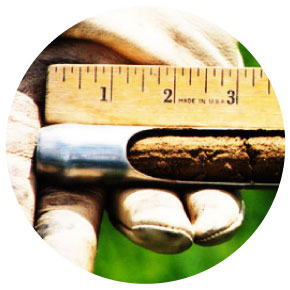Soil Analysis

While different varieties of soil share many of the same characteristics, key differences can affect whether or not a certain tree will thrive in the environment. Natural soil full of nutrients can take centuries to develop, and is the result of various factors including the plant and animal life of the area, temperature and precipitation. As such, certain kinds of trees are more likely to reap the benefits of a soil that is more suited to their nutritional needs. The best way to determine this is through soil analysis.
One aspect that should be tested is the texture, or the amount of particles from clay, sand and silt that are present in the soil. The makeup of these particles can affect the soil’s structure and the
availability of nutrients like water and air. How effectively the soil accommodates drainage should also be determined.
By utilizing a soil probe to take samples of the soil at the very surface, its texture, structure, level of compaction and color can be examined. Discovering the level of a soil’s acidity is another way to surmise the need for fertilization or other treatments. Trees actually perform well in soil with a small amount of acidity, around a pH of 6 to 6.5. Trees in urban environments tend to have higher acid levels caused by soil compaction and other stresses. In these situations, nitrogen is the element most likely to be deficient, so replacing it is an important part of ensuring a tree’s continued health.

